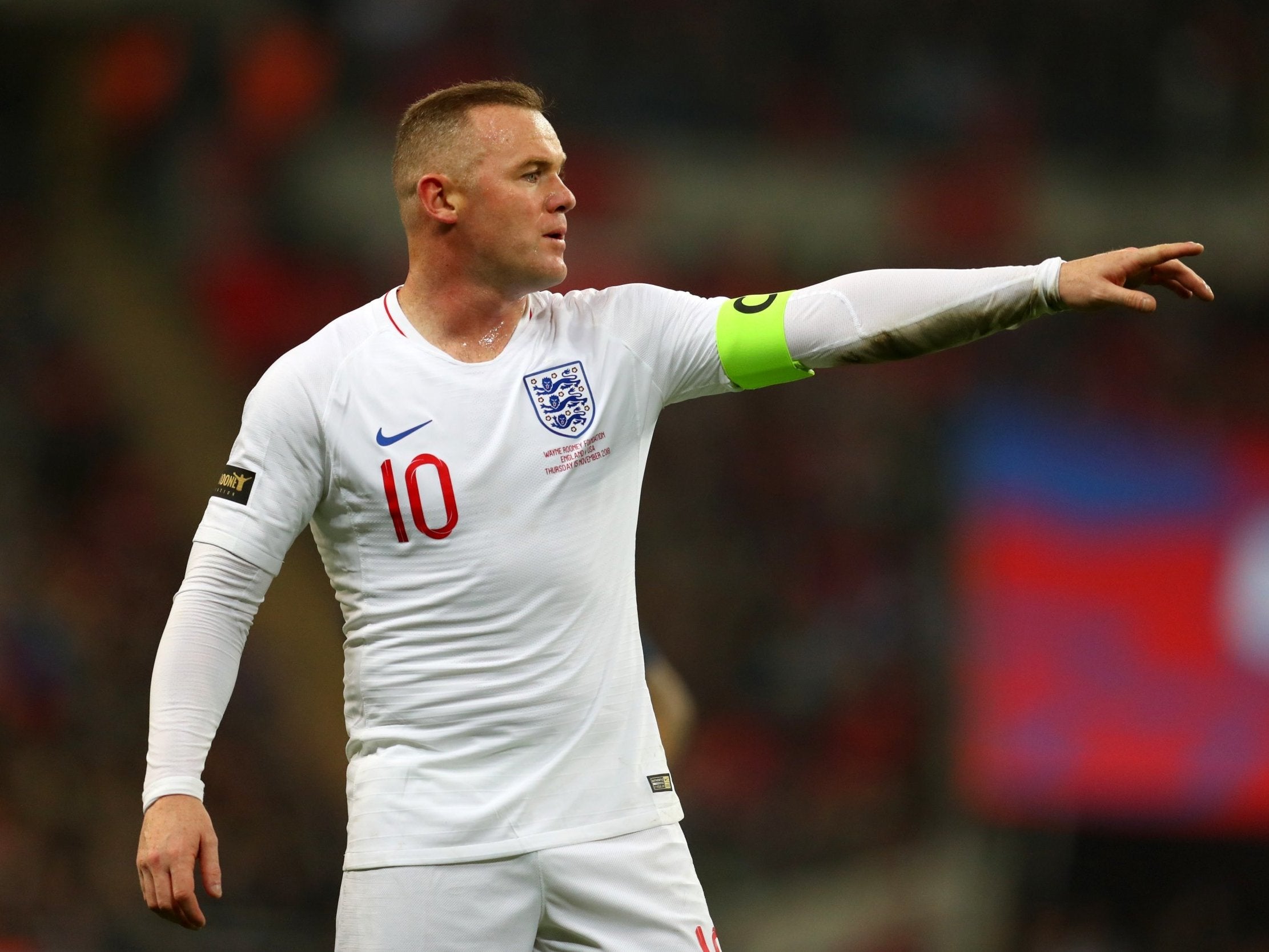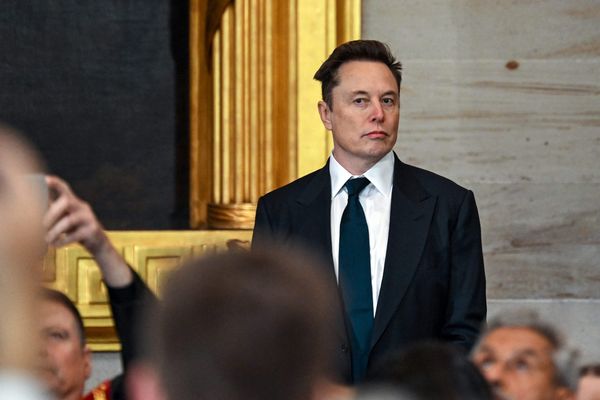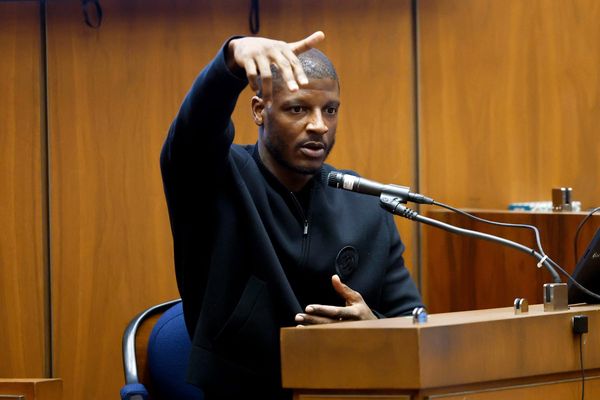
An electronic board outside Wembley Stadium reads: “WELCOME TO ICONIC WEMBLEY”. It’s the inclusion of the adjective that feels a touch peculiar. Like fame, or cleanliness, or not being racist, icon status is one of those qualities of which you probably shouldn’t have to remind people yourself. But then again, this is a sporting event in 2018, and so it’s necessary to tell the thousands making their way up Wembley Way not only where to walk and where to get their bags searched, but how to feel.
And so shortly before a quarter past nine on a crisp, cool night, the iconic Wayne Rooney stepped out onto the iconic turf at iconic Wembley to win the 120th iconic cap of his iconic England career. The yellow captain’s armband was affixed around his bicep. Up in the posh boxes, his wife Colleen recorded the moment on her phone for posterity. The crowd of around 68,000 rose to its feet to acclaim a player who, had he not retired over a year ago, they would probably have been greeted with a polite sigh and a muttered aside about how he was keeping Ruben Loftus-Cheek out of the side. It was, as they say in the feelings business, a lovely moment.
Here’s the thing, after all: for most of his international career, and certainly the second half of it, Rooney was perhaps the most reviled England footballer of the modern age. Yet here he was, playing a game that passed him by several years ago, in a team that only really started started doing well once he’d left it, and his every touch was being cheered, his every sight of goal met with a loud and pregnant intake of breath. Imagine if he scored. Imagine that. Imagine all the people I could tell I was there to see it.
Rooney’s valedictory inclusion for this largely pedestrian friendly had been described in the build-up as a “one-off”. It probably won’t be. In his pre-match press conference, Rooney himself had said the following: “As a country, we haven’t done anything like this before. But I hope that in 10-15 years’ time, we’re doing it for someone like Harry Kane.” I can’t claim to speak for Kane, but I’m sure he’d rather his final cap involved, you know, winning something.
This may seem like a very small and very churlish point to make. In life, and now in afterlife, Rooney has always been one of those players about whom sides must always be taken, lines drawn, trenches dug. Yet none of the conventional objections to Rooney’s appearance really stack up. You can’t talk about “devaluing” the England cap when Jay Rodriguez has one. You can’t talk about the FA tarnishing the integrity of the Three Lions when they were perfectly happy to take England to Trinidad and Tobago a decade ago simply to court Jack Warner’s 2018 World Cup vote.
No: in many ways the decision to give Rooney a stage-managed send-off raises questions that go well beyond one legendary forward and one meaningless friendly. There’s always been plenty of capital in nostalgia, whether it’s a remake of the Gilmore Girls, the Spice Girls reforming or the resurgence of fascism. But the real debate here is not about Rooney’s worthiness of a grand farewell, or even the extent to which great athletes should have their exits choreographed, but what we want out of sport in the first place.
Let’s imagine, by way of example, that Rooney had scored a spectacular winning goal for England in the 89th minute. Imagine the scenes. Imagine the feels. Except, let’s also say Rooney was fractionally offside when the ball was played to him. Would it have been appropriate for the assistant referee to allow the goal to stand on the basis of sentiment? Once we decide that we’re going to choreograph sporting contests according to emotional effect, to what extent are we prepared to blur the line between Pure Sport and Manufactured Sport? Does the duty to a paying audience outweigh the duty to the contest?
Of course, a capitulation to artifice already governs most of our cultural life. We all know that Love Island is largely scripted, that the hilarious viral video we just retweeted was probably staged, that the Instagram influencer you follow doesn’t really sleep on a bed of rose petals with all her make-up on. It’s a sort of covenant we all buy into in order to have our emotions tickled.
The difference is that sport has always acted as something of a counterpoint. We traipse across the country to watch football matches we know full well could end 0-0. We root for great athletes in the knowledge that on any given day, they could be beaten. Above all, we believe in the integrity of the spectacle. But for some time, perhaps for a long time, that’s been eroding; the firewall between sport and entertainment has been dissolving; partly because of our desire for instant emotional dividends, and partly through the willingness of organisers and administrators to grant them.

Earlier this week, it was revealed by the recently-retired French tennis player Julien Benneteau claimed what tennis insiders have known for years: that Roger Federer habitually and openly gets preferential treatment when it comes to scheduling, court assignments and playing times. If he wants to play a night session, almost invariably, organisers will let him. What’s interesting is how unperturbed those in the game feel about all this. “He deserves special treatment,” Novak Djokovic argued. “If he doesn’t have it, who is going to have it? You have to understand that Federer is a driving force of tennis in terms of revenue, in terms of attention.”
The rationale here is unmistakable: it might not be “fair”, in the strict and curmudgeonly sense of the term, but ultimately where’s the harm in it? This, then, is the faultline between Pure Sport and Manufactured Sport. You see it more and more these days, in all kinds of spheres, in all sports, on all kinds of scales. It might not strictly be “pure” to fix the draw so India and Pakistan play each other at every global cricket event. But if it’s what everyone wants, where’s the issue? It may not be “fair” to create an exclusive super league where the top European clubs play each other ad infinitum without the possibility of relegation. But if the best players are on the biggest stage, making everyone plenty of money, who cares?
And so we return to Rooney. In a piece for the New York Times this week, the writer Amanda Hess discusses the death of the ending, the modern phenomenon by which art or culture never really gets to finish, but simply gets regurgitated indefinitely: movie franchise reboots, resurrected TV characters, endless social media content feeds. “We needed stories to end so we could make sense of them,” she writes. “We needed characters to die so we could make sense of ourselves… [now] social media properties are less interested in facilitating ideas than they are in keeping users glued... the storytelling imperative has receded in favor of stickiness.”
Would the Wembley crowd have cheered Rooney’s final cap any more if it had come in a competitive game, against decent opposition, on the back of a strong run of goals in the Premier League and in a clear tactical role? Actually, I’m not so sure. We live in a world where, in politics as in culture as in sport, the rules and conventions and norms and structures that governed us all are now being reopened and renegotiated before our eyes. An entire society is being realigned along the principle that what creates the greatest feelings is of greatest worth.
And so our cultural lives are essentially a ceaseless quest for narrative, for banter, for something we can share or comment on, for constant commemoration. Those with the platforms, of course, are perfectly happy to keep us satisfied. After all, not only are emotions good for business, but if your audience stops feeling, they might well start thinking.







